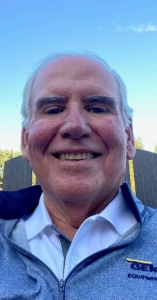Why Things Always Go Wrong
This week, Ryszard Chciuk gives us a recipe for success in his blog post on why things always go wrong.
Do you want to have a successful year? Do you want to become a better person? Listen to what Ron Slee is saying to you in his first vlog in 2021 and do it, because The Time Is Now. The time for reading books.
If you are able to read only one book during your whole life, and you want to achieve true satisfaction, both in business and life, read The Peter Principle: Why Things Always Go Wrong by Laurence J. Peter and Raymond Hull (both of them born in Canada of course).
The Peter Principle:
In a Hierarchy Every Employee Tends to Rise to His Level of Incompetence
What is incompetence? Perhaps you have heard of the nurse who says to the patient: Wake up! It’s time to take your sleeping pill.
First time I read The Peter Principle was in 1977. It was really funny to observe my superiors and colleagues through the Laurence Peter glasses. The book is written in the Mark Twain style so it’s OK to laugh, but you’d better take the content seriously. At that time nobody told me it would be the most important book in my life. Later on, I read it again and again, usually every few years. Also, I read it each time I had an opportunity to get a new job. Why? Nobody likes to make a fool of oneself. I also never wished to be an incompetent person. And believe me, it is not easy to recognize whether you are already only one step below your level of incompetence or perhaps not yet.
Each of us spends his life in a hierarchy and everybody is subject to the Peter Principle. As Peter Laurence claims, in time, every post tends to be occupied by an employee who is incompetent to carry out its duties.
You are not allowed to hurt your employee. So, be careful promoting him to another post, even he is very eager to. Imagine your best technician is getting a chance to manage a team of field technicians. For many years he was solving the most difficult problems with customers’ machines and he was proud of it. Are you sure he will also be happy and competent as a supervisor for another people? Maybe he is destined to become the Chief Diagnostics Specialist? I know, this is obviously about a career path and your HR department should be able to support you in this matter. Are you sure the HR specialist is still below his/her incompetence level?
Let’s jump out for a while from business. In democracy we have rights to vote. Why there are so many totally incompetent politicians occupying posts which are so important for the safety and well-being of the nation? Do you think you are still one step below your level of incompetence as a citizen of your country?
Are there any exceptions from the Peter Principle? The third chapter in the book has a title Apparent Exceptions.
What about super-competence? Standard incompetence is only a bar to promotion to higher post. If you are super-competent and your superior reached already his/her level of incompetence you will probably soon be fired due to the violation of the first commandment of hierarchal life i.e., the hierarchy must be preserved.
The people who have reached their level of incompetence are everywhere, so who turns the wheels? Work is accomplished by those employees who have not yet reached their level of incompetence.
The final question: is there any way to protect your own organization from reaching the total level of incompetence? Yes, two things could prevent this happening: that there should not be enough time available, or not enough ranks in the hierarchy.
***
Do not decide lightly to read The Peter Principle. This is just a book, but I have to warn you using words of Raymond Hull: The decision to read on is irrevocable. If you read, you can never regain your present state of blissful ignorance; you will never again unthinkingly venerate your superiors or dominate your subordinates. Never!







